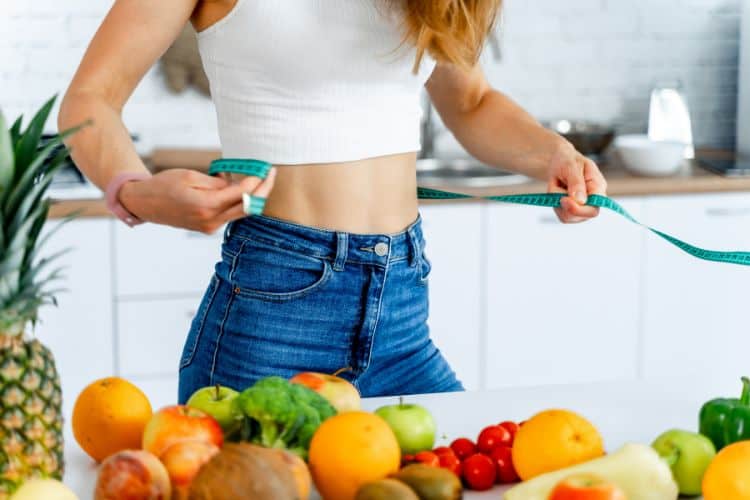60 Day Weight Loss Diet Your Guide to Shedding Pounds
Looking to shed weight and transform your lifestyle in just two months? A structured 60-day weight loss diet plan can help you lose fat, boost energy, and improve your overall health. This comprehensive guide breaks down an effective two-month meal strategy that’s easy to follow and scientifically sound—without crash diets or unsustainable fads. Let’s get into the details.
Why a 60 Day Weight Loss Diet Plan Works
A 60-day timeline is long enough to form new habits and see measurable results, yet short enough to stay focused. Unlike 7- or 14-day crash diets, a 2-month meal plan allows your metabolism to adjust gradually, making weight loss more sustainable. It provides the structure and time to change your relationship with food, create a calorie deficit, and nourish your body with balanced meals.
Key Principles of the 60-Day Weight Loss Diet Plan
Before jumping into the specifics, it’s important to understand the core principles that make this plan effective:
1. Calorie Deficit
To lose weight, you must burn more calories than you consume. This diet plan ensures a manageable caloric deficit of 500–750 calories per day, which typically leads to 1–2 pounds of fat loss per week.
2. Macronutrient Balance
You’ll consume a healthy ratio of protein, carbohydrates, and fats:
- Protein (30–40%): To preserve muscle mass and control hunger
- Carbohydrates (30–40%): For energy and nutrients
- Healthy fats (20–30%): To support hormones and satiety
3. Whole, Nutrient-Dense Foods
You’ll focus on whole foods—vegetables, lean proteins, fruits, whole grains, and healthy fats—while minimizing processed foods, sugar, and empty calories.
4. Hydration and Lifestyle
Water intake, sleep, and stress management are integrated into the program to maximize weight loss and well-being.
Phase 1: Days 1–30 – Reset and Rebalance
The first month focuses on building consistency, reducing cravings, and getting your body used to healthier eating habits.
Week 1–2: Elimination and Transition
Start by reducing the following:
- Added sugars
- Refined grains (white bread, white rice)
- Fried and processed foods
- Sugary drinks and alcohol
What to Eat:
- Breakfast: Greek yogurt with berries and chia seeds
- Lunch: Grilled chicken salad with olive oil dressing
- Dinner: Baked salmon, quinoa, and steamed broccoli
- Snacks: A boiled egg, raw nuts, or sliced veggies with hummus
Drink at least 2–3 liters of water per day and aim for 7–8 hours of sleep.
Week 3–4: Build a Rhythm
By week 3, your body begins to adapt. You’ll feel fewer sugar cravings and more energy. Focus on meal prepping and planning ahead to avoid slip-ups.
Meal Strategy:
- Include protein in every meal (chicken, fish, tofu, eggs)
- Eat fiber-rich carbs (sweet potatoes, oats, legumes)
- Use herbs, lemon, garlic, and spices instead of sauces or salt
Try intermittent fasting (optional): eat within a 10-hour window (e.g., 9am–7pm) to manage hunger hormones and improve insulin sensitivity.
Phase 2: Days 31–60 – Optimize and Sustain
This phase focuses on fine-tuning your routine to accelerate fat loss and set you up for long-term success.
Week 5–6: Intensify the Nutrition Focus
Now that you’ve established a baseline, it’s time to optimize.
Add These Habits:
- Increase vegetable intake to fill half your plate
- Add 1 tablespoon of apple cider vinegar before meals to stabilize blood sugar
- Introduce superfoods like flaxseeds, spirulina, and turmeric
Sample Day Plan:
- Breakfast: Oatmeal with protein powder and banana
- Lunch: Lentil soup with side salad
- Dinner: Turkey stir-fry with mixed vegetables and brown rice
- Snack: Cottage cheese with berries
Drink green tea after meals to support metabolism.
Week 7–8: Fat Loss Boost
You’re nearing the finish line! To boost fat loss:
- Slightly lower daily carb intake if needed
- Avoid late-night snacking
- Keep protein intake high (0.8–1g per pound of bodyweight)
Suggested Meals:
- Zucchini noodles with shrimp and avocado pesto
- Egg muffins with spinach and turkey bacon
- Grilled tempeh with roasted cauliflower and tahini dressing
Make it a rule: eat real, recognizable ingredients. Nothing with more than five ingredients or anything you can’t pronounce.
Weekly Grocery Lists for Each Phase of 60 Day Weight Loss Diet Plan
To stay consistent, planning your grocery shopping is essential.
Phase 1 Grocery List:
- Lean meats: Chicken breast, turkey, cod
- Plant proteins: Lentils, chickpeas, black beans
- Vegetables: Spinach, kale, carrots, zucchini, bell peppers
- Fruits: Apples, bananas, berries, oranges
- Grains: Brown rice, oats, quinoa
- Healthy fats: Avocados, almonds, olive oil
- Drinks: Herbal tea, lemon water
Phase 2 Grocery List:
- Eggs, tofu, cottage cheese, Greek yogurt
- Cauliflower, asparagus, mushrooms, green beans
- Blueberries, kiwi, grapefruit
- Whole-grain wraps, buckwheat, couscous
- Chia seeds, flaxseed meal, coconut oil
- Bone broth, miso, vegetable stock
Meal Prep Tips for 60 Day Weight Loss Diet Plan Success
Meal prep is your best friend during this 60-day diet. It saves time, prevents impulse eating, and keeps you aligned with your goals.
Batch Cooking Strategy:
- Cook 3–5 days’ worth of proteins in bulk
- Pre-chop veggies and store in containers
- Use mason jars for overnight oats and salads
- Freeze portions for later in the week
Portion Control:
- Use measuring cups or a food scale
- Fill half your plate with veggies
- Stick to one serving of carbs per meal
Exercise Integration with the 60 Day Weight Loss Diet Plan
While this plan is primarily diet-focused, combining it with regular exercise amplifies results.
Weekly Exercise Suggestions:
- 3–4 days of strength training
- 2–3 days of cardio (brisk walking, jogging, cycling)
- Daily stretching or yoga
Pair workouts with protein-rich recovery meals within 45 minutes post-exercise to support muscle repair.
Supplements to Support Your Weight Loss Diet (Optional)
While not mandatory, certain supplements can enhance your results if used correctly.
Recommended:
- Multivitamin: To fill any micronutrient gaps
- Whey or plant-based protein: For convenient meal replacements
- Magnesium: Helps regulate blood sugar and stress
- Omega-3: Reduces inflammation and supports heart health
- Probiotics: Improve digestion and gut health
Always consult a healthcare provider before starting any supplement.
Common Mistakes to Avoid With 60 Day Weight Loss Diet Plan
Even with the best intentions, pitfalls can sabotage progress.
Watch Out For:
- Underestimating calories in sauces, dressings, and snacks
- Skipping meals, leading to overeating later
- Not drinking enough water
- Overreliance on “diet” foods like protein bars
- Lack of consistency on weekends
Focus on progress, not perfection. One bad meal won’t ruin your results, but giving up consistency might.
Mindset and Motivation for 60 Day Weight Loss Diet Plan Success
Weight loss isn’t just physical—it’s mental and emotional. Keep these mindset tips in mind:
Motivation Tactics:
- Take weekly progress photos
- Track meals using apps like MyFitnessPal
- Reward yourself with non-food treats (e.g., new clothes or spa day)
- Join online groups or accountability buddies
Remember: You’re creating habits for life, not just 60 days.
Here’s a one-week meal template to keep you on track:
Day 1:
- B: Scrambled eggs, spinach, and avocado
- L: Grilled chicken with quinoa and cucumber salad
- D: Baked cod, sweet potato, steamed green beans
- Snack: Handful of almonds
2:
- B: Overnight oats with chia seeds and blueberries
- L: Turkey lettuce wraps with hummus
- D: Lentil stew and roasted carrots
- Snack: Greek yogurt
3:
- B: Protein smoothie with banana, spinach, and almond milk
- L: Brown rice bowl with tofu, edamame, and veggies
- D: Grilled shrimp with couscous and asparagus
- Snack: Cottage cheese
(Repeat variations of this throughout the week)
What to Expect After Your 60 Day Weight Loss Diet Plan
By the end of this plan, many users report:
- 8–15 pounds of weight loss
- More energy, better sleep, and improved digestion
- Stronger discipline and fewer cravings
- A foundation for long-term healthy eating
You won’t just lose weight—you’ll gain control of your lifestyle.
Final Tips Staying on Track After 60 Day Weight Loss Diet Plan
- Continue meal prepping weekly
- Use the 80/20 rule: 80% whole food, 20% flexible
- Re-evaluate goals monthly
- Practice mindful eating and portion control
- Celebrate your transformation, but keep going
The end of 60 days is just the beginning of a sustainable, healthy lifestyle.
Start Your 60-Day Weight Loss Journey Today
This 60-day weight loss diet plan is a roadmap to reclaim your health, transform your body, and develop sustainable habits that last. With a balanced approach, strategic meal planning, and smart grocery lists, you can lose weight without depriving yourself.
Start today—and in two months, you’ll thank yourself.
Most Recommended





